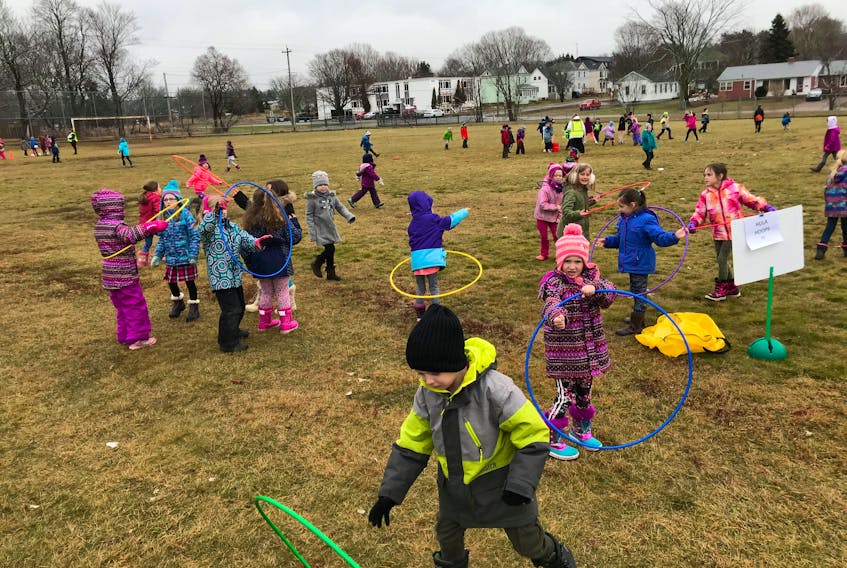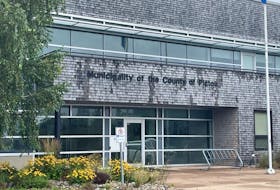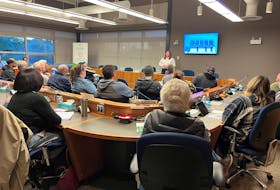AMHERST – Heather Janes-Pedersen used to notice a line of students waiting to see her after lunch at Spring Street Academy.
As principal, she often dealt with student behaviour in the playground during lunchtime and recess. While it wasn’t a huge issue at the school, it was one that she wanted to find a solution to.
So, she brainstormed with staff and did some research online before coming up with a Peaceful Playground initiative that’s already having an impact on behavioural issues at the Amherst elementary school.
“It has really made a difference in that there have been a lot fewer office referrals than before,” said Janes-Pedersen. “The goal is to reduce conflict among students and it has had a significant impact. The kids have really embraced it and so have the staff. There is always going to be some conflict, but it has been significantly been reduced.”
The school created the Peaceful Playground initiative in an effort to create a play space that is socially, emotionally and physically appealing to students. It’s also a way to celebrate positive behaviour by students.
The program, that received a $2,000 grant from the Nova Scotia Teachers Union’s Sheonoroil Foundation, supports one of the school’s student success plan strategies in that is seeks to enhance a positive learning environment through the implementation of a school-wide behaviour model that includes a matrix of expected behaviour for every area of the school – including the playground.
“The program was borne out of some observations that we were making. We were having a lot of incidents coming in off the playground and the office was becoming a bit of a revolving door,” she said. “We knew we had to do something to address the safety of students.”
Janes-Pedersen said staff also noticed children were missing out on the opportunity to simply play and have fun in a positive and productive way.
Working with her behaviour team and other staff at the school, the group worked to develop the program between September and early December when it was implemented with a school assembly that introduced the 13 activities to the students for use during recess and lunchtime.
“We wanted to create a playground that provided options for children who have different interests and are of different ages. We also have a huge playground out there, but the use of it wasn’t being maximized,” she said.
The activities are varied and include the use of the pre-existing play structures, while there are painted markings on the asphalt areas behind the school and established sections in the field clearly indicate the play zones.
Each activity also has a limit of participants to reduce the risk of confrontation while the activities are all non-competitive. There are independent play activities like skipping, chalk drawing, snow painting and hula-hooping while others – like bowling, soft Frisbee, soccer relay and snow fort building – are more organized.
Students have also been taught a number of interactive games during Daren White’s physical education classes to prepare them for play on the playground.
The program has also seen an adjustment to the lunchtime schedule in that students take lunch in three shifts which reduces the number of children on the playground at any one time and eliminates the need for the younger students to be outside at the same time as the older students.
Staff that monitor the playground are also assigned to specific areas during recess and lunch, whereas before the would simply move around the entire playground. Staff also have yellow vests on so students know who to go to for help.
The lunchtime routine has also been adjusted so the students play first and then eat before returning to class for the afternoon. Janes-Pedersen said research has shown students return to class much calmer and ready to learn while students also eat more instead of rushing through their meal to get to the playground. It also has led to improved behaviour in the cafeteria (where all students are now expected to eat) and on the playground.
Moving forward, Janes-Pedersen said the school hopes to add a social-emotional learning component that will teach the children things like fair play and conflict resolution.
Twitter: @ADNdarrell









